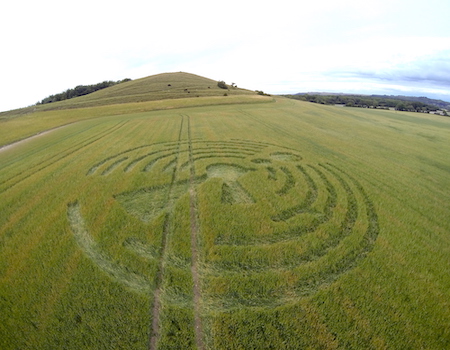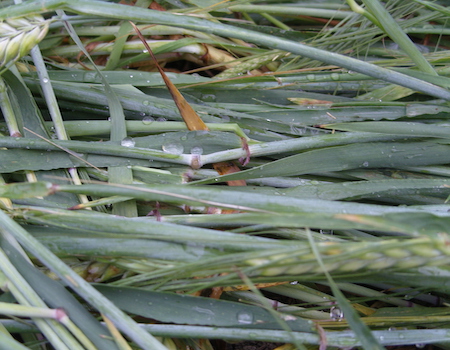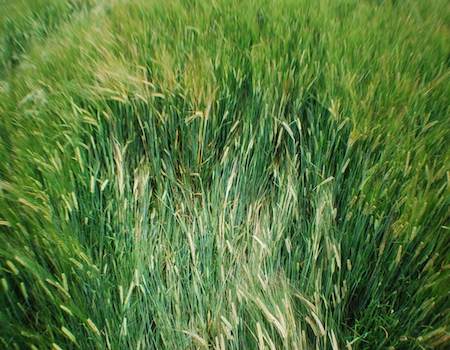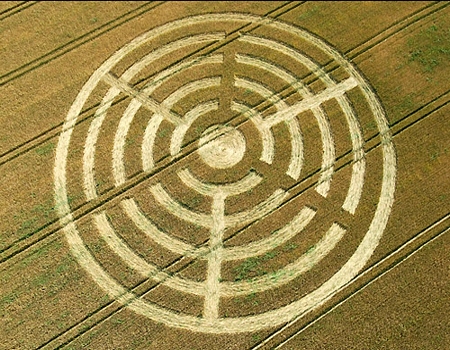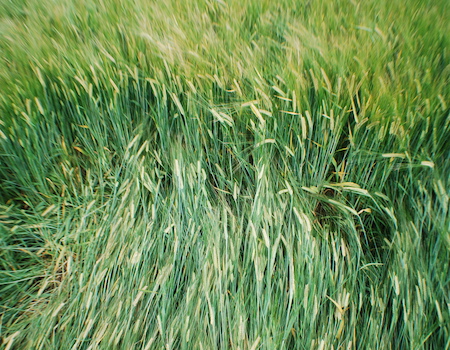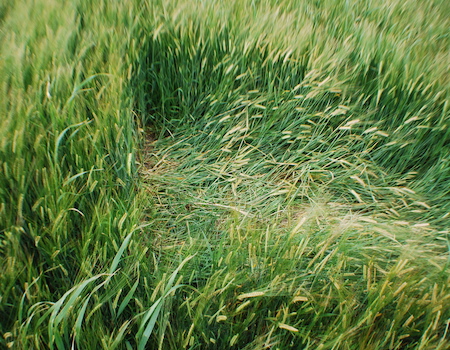 |
||||||||||||||||||||||||
 |
 |
|||||||||||||||||||||||
 |
||||||||||||||||||||||||
 |
 |
 |
 |
|||||||||||||||||||||
| 2015 CIRCLES | 2014 CIRCLES | 2013 CIRCLES | 2012 CIRCLES | |||||||||||||||||||||
|
||||||||||||||||||||||||
 |
 |
|||||||||||||||||||||||

|
The location of this small formation is perfectly linked to the previous one at Milk Hill as it is within the same section of field at Cley Hill as the 2010 spectacular. Perfectly framed within the small amphitheatre which forms the north eastern part of Cley Hill, the crop circle can be seen from three sides. It is a most tranquil spot.
Ground details within the formation show little variation and the surprisingly young barley has re-grown very quickly, with phototropism from the lowest node evident throughout. Unlike some other circles in green crops, the stems here do not seem to have 'recovered' in the same way. They have not sprung back up from the base, but rather, the lowest segment of stems in most of the formation has remained firmly flattened to the ground. There are two distinct ways in which the flat ends of the segmented, concentric rings have been formed. One is a subtle, almost brushed appearance, where standing stems simply flow gently into and against the standing crop. In these areas, the barley seems less compacted and in much better condition. creating segments in this way is reminiscent of two particular formations in the past; one at Wilton Windmill in 2010 and the other, very fine example, at Hat Gate Cottage in 2007 (see image below).
Hat Gate Cottage, Wiltshire, 2007
In contrast to this, other segments are created with an anti-clockwise, firmly flattened 'outline' over which stems have been laid. In these areas, the stems are in poorer condition and generally look quite messy underneath the surface layers. Where the segmented pathways begin, following the clockwise flow of the stems, there is also a much more dramatically flattened area in most cases, with stems more compacted than in other areas.
Crop Circle Summary
Alternative Websites |


